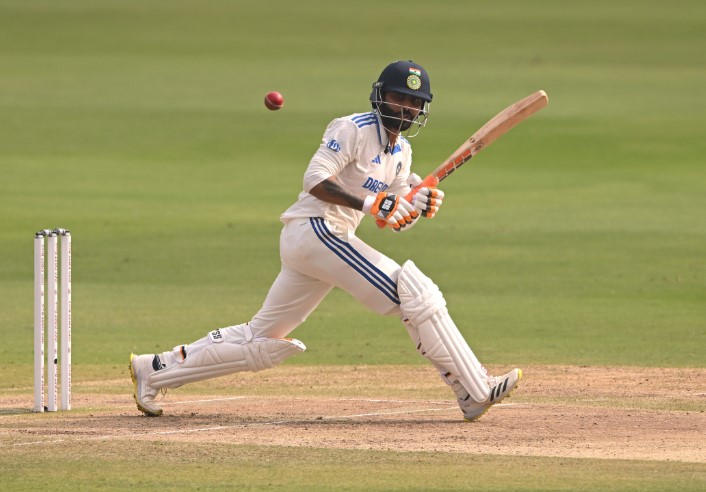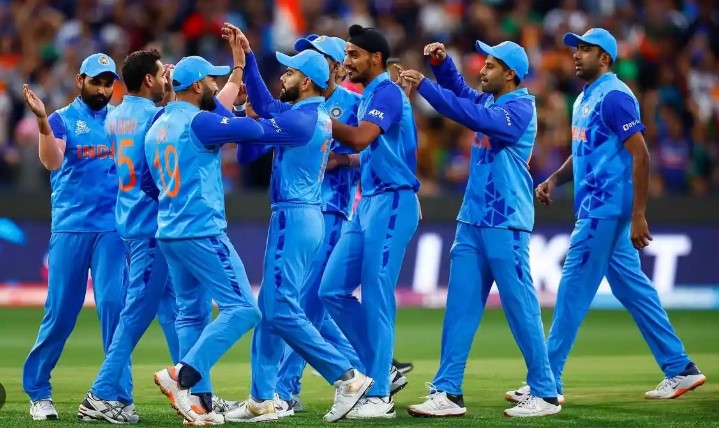Strike Rate: Cricket is a game that combines strategy, technique, and athleticism, with a rich history of rules and metrics that have evolved over time. Among the many statistics that help measure a player’s performance, SR stands out as a critical and widely discussed statistic, especially when it comes to assessing a batsman’s ability to score runs quickly. In this article, we will explore what strike rate means in cricket, how it is calculated, and its significance in evaluating a player’s performance.
What Is Strike Rate In Cricket?

In cricket, this refers to the number of runs a batsman scores per 100 balls faced. It is a measure of how quickly a batsman scores runs. The concept is especially relevant in limited-overs formats like One Day Internationals (ODIs) and Twenty20 (T20) cricket, where scoring runs quickly is a key factor. In Test cricket, while strike rate is still important, batsmen often take a more measured approach, so the statistic is considered in conjunction with other factors like the total number of runs scored and the context of the innings.
For bowlers, SR refers to the number of balls bowled per wicket taken. This gives an idea of how frequently a bowler takes wickets during a match, and it is a key metric used to evaluate the effectiveness of a bowler.
When Referring To A Batsman SR
When referring to a batsman’s SR, it is a measure of their scoring rate, i.e., the number of runs they make per 100 balls. A higher strike rate generally indicates a batsman is scoring runs at a faster pace.
Importance For Batsmen SR
A batsman’s strike rate is particularly significant in limited-overs formats. Here’s why:
Increased Pressure: In limited-overs cricket, the batting team is under pressure to score as many runs as possible in a set number of overs (e.g., 50 overs in ODIs and 20 overs in T20s). A high strike rate means a batsman is able to score quickly, putting pressure on the fielding side.
Role of the Batsman: Depending on the role of the batsman, their expected strike rate may vary. Top-order batsmen are often expected to anchor the innings and score at a steady rate, while lower-order batsmen and finishers are expected to score rapidly in the death overs.
Contextual Performance: While a high SR is generally positive, it should also be viewed in context. For instance, a batsman playing in a situation where they need to preserve their wicket (such as chasing a low target or playing for a draw) might have a lower strike rate, but their role could be equally crucial.
How SR Calculated For Batsmen?

The formula for calculating a batsman’s SR is simple:
Strike Rate (SR)=(Balls Faced/Total Runs Scored)×100
For example, if a batsman scores 80 runs off 60 balls, their strike rate would be:
SR=(6080)×100=133.33
This means the batsman is scoring at a rate of 133.33 runs per 100 balls.
Example Of SR Calculation
Let’s consider a few examples of different batting performances:
| Batsman | Runs Scored | Balls Faced | Strike Rate |
|---|---|---|---|
| Batsman A | 45 | 30 | 150.00 |
| Batsman B | 120 | 100 | 120.00 |
| Batsman C | 30 | 40 | 75.00 |
| Batsman D | 56 | 50 | 112.00 |
In this table, Batsman A has the highest SR, scoring 150 runs per 100 balls, which suggests they were playing aggressively. On the other hand, Batsman C has a relatively lower strike rate of 75, which could mean they were playing a more conservative or defensive role.
SR For Bowlers
As mentioned earlier, this term also applies to bowlers in cricket, although it is calculated differently. For a bowler, SR is defined as the number of balls they bowl per wicket taken. A lower strike rate for a bowler indicates that they take wickets more frequently.
Importance Of Strike Rate For Bowlers
A bowler is crucial for understanding their effectiveness in breaking partnerships and taking wickets in a match. A bowler with a low SR is usually seen as a wicket-taker who can quickly remove batsmen and turn the game in their team’s favor. On the other hand, a high strike rate may indicate that the bowler is ineffective or that they take longer to claim wickets.
How SR Calculated For Bowlers?

The formula for calculating a bowler’s SR is: Bowler’s Strike Rate (SR)=Wickets Taken/Balls Bowled
For example, if a bowler has bowled 120 balls and taken 4 wickets, their strike rate would be:
SR=41/20=30
This means the bowler takes a wicket every 30 balls.
Example Of Bowler SR Calculation
Let’s look at some examples of bowler performances:
| Bowler | Balls Bowled | Wickets Taken | SR |
|---|---|---|---|
| Bowler A | 150 | 5 | 30 |
| Bowler B | 180 | 6 | 30 |
| Bowler C | 90 | 3 | 30 |
| Bowler D | 120 | 10 | 12 |
In this table, Bowler D has an excellent SR of 12, meaning they take a wicket every 12 balls, which shows they are very effective in breaking partnerships. On the other hand, Bowler A, Bowler B, and Bowler C all have a strike rate of 30, indicating that they take a wicket every 30 balls on average.
Factors Affecting A Batsman’s SR
There are several factors that can influence a batsman’s SR:
Type of Match: In Test cricket, batsmen usually score at a slower pace, which leads to lower SR compared to the faster-paced ODIs and T20s.
Pitch Conditions: A fast, bouncy pitch can aid aggressive batting and lead to a higher strike rate, while slow or turning pitches may result in slower scoring.
Match Situation: If a team is chasing a high target, the batsman will likely aim for a higher strike rate. Conversely, if they are anchoring an innings, their strike rate may be lower.
Bowler’s Skill: The quality of the bowler(s) a batsman faces can also impact their ability to score quickly. A bowler who restricts runs and maintains tight control will force the batsman to adopt a more conservative approach, leading to a lower strike rate.

This is a fundamental statistic in cricket that helps evaluate the speed at which a batsman or bowler performs during a match. For batsmen, it reflects how quickly they score runs, with higher strike rates generally indicating more aggressive and impactful batting. For bowlers, strike rate reveals how often they take wickets, with a lower strike rate suggesting greater effectiveness in taking wickets.
Both batsmen’s and bowlers’ SR can vary based on various factors such as match conditions, format, and individual playing style. A comprehensive understanding of strike rate allows coaches, players, and analysts to assess performance in a more detailed manner and helps to enhance the strategies for future matches.

